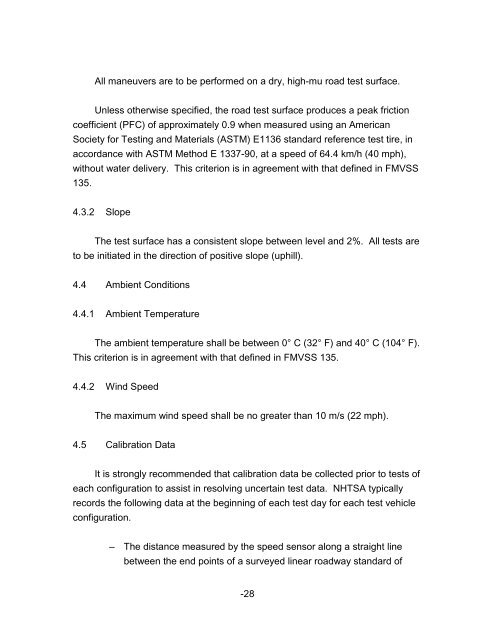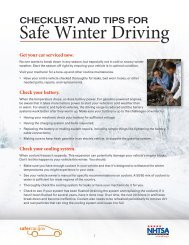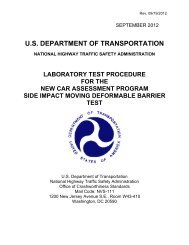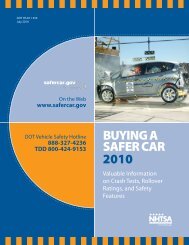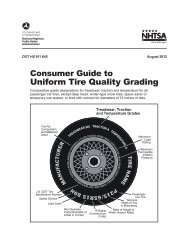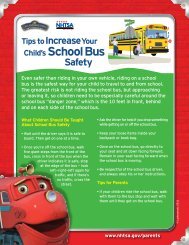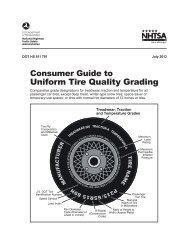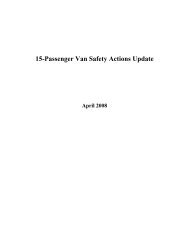Fishhook Maneuver Test Procedure - SaferCar.gov
Fishhook Maneuver Test Procedure - SaferCar.gov
Fishhook Maneuver Test Procedure - SaferCar.gov
You also want an ePaper? Increase the reach of your titles
YUMPU automatically turns print PDFs into web optimized ePapers that Google loves.
All maneuvers are to be performed on a dry, high-mu road test surface.<br />
Unless otherwise specified, the road test surface produces a peak friction<br />
coefficient (PFC) of approximately 0.9 when measured using an American<br />
Society for <strong>Test</strong>ing and Materials (ASTM) E1136 standard reference test tire, in<br />
accordance with ASTM Method E 1337-90, at a speed of 64.4 km/h (40 mph),<br />
without water delivery. This criterion is in agreement with that defined in FMVSS<br />
135.<br />
4.3.2 Slope<br />
The test surface has a consistent slope between level and 2%. All tests are<br />
to be initiated in the direction of positive slope (uphill).<br />
4.4 Ambient Conditions<br />
4.4.1 Ambient Temperature<br />
The ambient temperature shall be between 0° C (32° F) and 40° C (104° F).<br />
This criterion is in agreement with that defined in FMVSS 135.<br />
4.4.2 Wind Speed<br />
The maximum wind speed shall be no greater than 10 m/s (22 mph).<br />
4.5 Calibration Data<br />
It is strongly recommended that calibration data be collected prior to tests of<br />
each configuration to assist in resolving uncertain test data. NHTSA typically<br />
records the following data at the beginning of each test day for each test vehicle<br />
configuration.<br />
– The distance measured by the speed sensor along a straight line<br />
between the end points of a surveyed linear roadway standard of<br />
-28


